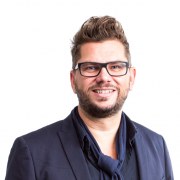Tipping point: when exhibitions become experiences
Find this session's presentations here.
Museums and science centres have been gradually realising how much their visitors demand from exhibitions. Since information is available everywhere, both on the on-line and off-line world, the traditional hands-on exhibits found in science centres worldwide might be coming to an end. The museum of the future has to develop new innovative approaches. Which ones? Who or which institutions are already doing that, why and what are their outcomes? In this session, invited speakers can share their strategies, viewpoints and results with exhibitions that lead to a more multidisciplinary, open-minded, participative and specially closer and more personal experience. How can we learn from these examples? Are we on this tipping point already, due to some museums' daring spirit, or is this change still to happen out of necessity and society’s demands?
Session speakers
WP Lead (vice rector, education)
Exhibition can be seen as one tool for creating a compelling and current message. Heureka is moving its thinking towards thematic approach, which means focusing on a challenge or topic that science is currently solving or trying to advance. Turning these thematics that are interesting for professionals involved, advancing the area into a compelling experience for visitors needs focusing on the question: What is it that creates the discovery and how can the visitor contribute?
Dialogue exhibitions intend to promote diversity and social inclusion. Its methodology is based on Jack Mezirow’s theory of transformative learning, and translated in the context of interactive and immersive exhibitions with a strong envolvement of disadvantaged communities. In this session we will share this methodology, its impact and present the vision of Dialogue exhibitions 2.0.
Head of Science Center Department
The Norwegian Museum of Science and Technology has hosted the award winning exhibition Ting and will share here the outcomes in relation to the visitor experience and impact in the scientific community and its peers. How far can a science centre go when it comes to cross limits and let an exhibition become an experience? Should this be the aim and mission of the decision-makers of the museum of the and for the next generations?
TAMSCHICK MEDIA + SPACE focuses on the immersive, haptic dimension of digital media in spaces and involves the visitors in emotional and audiovisual walk-in environments.
With the development of the exhibition “TING” for the Norwegian Museum of Technology, visitors were to explore and discuss the relationship between technology and democracy. A high degree of visitor participation has created a truly pioneering exhibition format, where objects, visitors and space begin their dialogue.
Science Gallery London is trying out an idea: if you consult young people on what you put in your exhibition then more of them will come and they will have a richer experience when they do. The engagement process starts 18 months before the show and the audience is the one who defines the curatorial agenda. Will giving them control enhance their participation in the exhibition itself? Science Gallery London is curious to find out.






